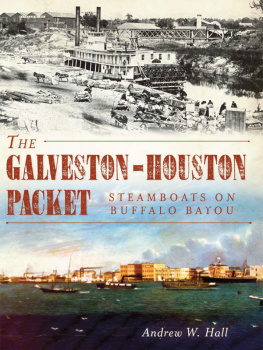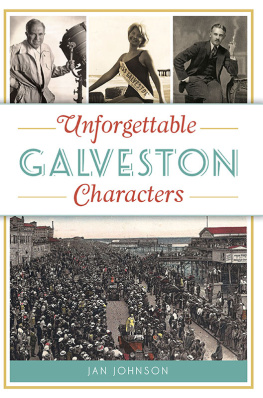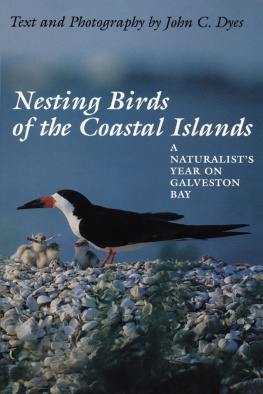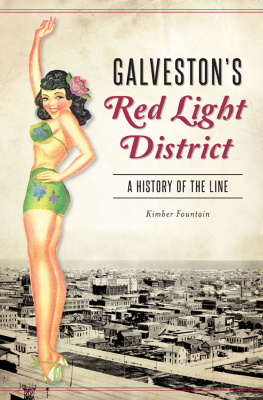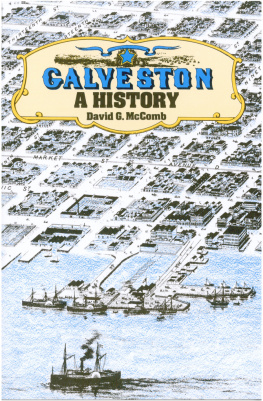Edward T. Cotham - Battle on the Bay: The Civil War Struggle for Galveston
Here you can read online Edward T. Cotham - Battle on the Bay: The Civil War Struggle for Galveston full text of the book (entire story) in english for free. Download pdf and epub, get meaning, cover and reviews about this ebook. year: 1998, publisher: University of Texas Press, genre: History. Description of the work, (preface) as well as reviews are available. Best literature library LitArk.com created for fans of good reading and offers a wide selection of genres:
Romance novel
Science fiction
Adventure
Detective
Science
History
Home and family
Prose
Art
Politics
Computer
Non-fiction
Religion
Business
Children
Humor
Choose a favorite category and find really read worthwhile books. Enjoy immersion in the world of imagination, feel the emotions of the characters or learn something new for yourself, make an fascinating discovery.

- Book:Battle on the Bay: The Civil War Struggle for Galveston
- Author:
- Publisher:University of Texas Press
- Genre:
- Year:1998
- Rating:5 / 5
- Favourites:Add to favourites
- Your mark:
- 100
- 1
- 2
- 3
- 4
- 5
Battle on the Bay: The Civil War Struggle for Galveston: summary, description and annotation
We offer to read an annotation, description, summary or preface (depends on what the author of the book "Battle on the Bay: The Civil War Struggle for Galveston" wrote himself). If you haven't found the necessary information about the book — write in the comments, we will try to find it.
A narrativehistory of the Civil War years in Galveston, Texas.
Battle on the Bay: The Civil War Struggle for Galveston — read online for free the complete book (whole text) full work
Below is the text of the book, divided by pages. System saving the place of the last page read, allows you to conveniently read the book "Battle on the Bay: The Civil War Struggle for Galveston" online for free, without having to search again every time where you left off. Put a bookmark, and you can go to the page where you finished reading at any time.
Font size:
Interval:
Bookmark:
BATTLE ON THE BAY

The Civil War Struggle for GALVESTON
Edward T. Cotham, Jr.

Copyright 1998
by the University of Texas Press
All rights reserved
Printed in the United States of America
Second paperback printing, 2004
Requests for permission to reproduce material
from this work should be sent to
Permissions, University of Texas Press, Box 7819,
Austin, TX 78713-7819.
 The paper used in this publication
The paper used in this publication
meets the minimum requirements of
American National Standard for Information Sciences
Permanence of Paper for Printed Library Materials,
ANSI Z39.48-1984.
ISBN 978-0-2927-1205-8
Library of Congress Cataloging-in-Publication Data
Cotham, Edward T. (Edward Terrel), 1953
Battle on the Bay : the Civil War struggle for Galveston /
by Edward T. Cotham, Jr.1st ed.
p. cm.
Includes bibliographical references and index.
ISBN 0-292-71205-7 (pbk. : alk. paper)
1. Galveston (Tex.), Battle of, 1863. I. Title.
E474.1.C67 1998 97-4835
973.733dc21
This book is dedicated to
EDWARD T. COTHAM, SR.
This book would not have been possible without the assistance of Casey Greene and the staff of the Galveston and Texas History Center of the Rosenberg Library in Galveston, Texas. The Rosenberg Library is one of the finest archives and repositories of manuscript materials in the Southwest and fully deserves its excellent reputation.
In addition, I gratefully acknowledge the courtesy and assistance of the staffs of the Center for American History, University of Texas at Austin; the Galveston Historical Foundation; Texas State Archives at Austin; Woodson Research Center, Fondren Library, Rice University; Houston Metropolitan Research Center, Houston Public Library; Library of Congress; Massachusetts Historical Society; Military Division History Research and Museum, Commonwealth of Massachusetts; Boston Public Library; Special Collections Division of the Howard-Tilton Memorial Library, Tulane University; the Wallisville Heritage Park; the Confederate Research Center at Hill College, Hillsboro, Texas; Daughters of the Republic of Texas Library at the Alamo; Special Collections, University of Houston Libraries; Peabody Essex Museum in Salem, Massachusetts; Chicago Historical Society; the Holt-Atherton Department of Special Collections at the University of the Pacific Library in Stockton, California; Clifton Steamboat Museum, Beaumont, Texas; U.S. Army Military History Institute, Carlisle Barracks, Carlisle, Pennsylvania; Concord Free Public Library, Concord, Massachusetts; The Commonwealth of Massachusetts State Library; and the Sam Houston Regional Library & Research Center, Liberty, Texas.
Edward T. Cotham, Sr., W. C. Leroy Rodgers, and Rhett Campbell read early drafts of this manuscript and made many helpful suggestions. The members of the Houston Civil War Roundtable gave me valuable support. Kevin Young and Donald S. Frazier also encouraged this project. Finally, this project owes more than can be acknowledged to the encouragement and help of my wife, Candace.
BATTLE ON THE BAY
Galveston is one of the best-documented, but least-appreciated, American Civil War sites. Although the number of books written about the Civil War seems to be almost infinite, most histories of this conflict ignore the Island City of Texas entirely. This historical anonymity is undeserved. From the appearance off its shores in 1861 of the first blockading Union gunboat to the surrender of the last major Confederate force in 1865, Galveston was the focal point of Civil War activity in the Southwest.
Galveston found itself at the center of this struggle thanks to the geographic forces that stimulated settlement of the island in the first place. The City of Galveston lies at the northeastern end of the island of the same name, across from the southwestern tip of the Bolivar Peninsula. Through the relatively narrow gap between these two points must pass the immense volume of water that is necessary for the tides to alternately raise and lower the water level in the roughly five hundred square miles of Galveston Bay. Physics dictates that at the point of this constriction, the water must pass relatively swiftly, carving out a channel that is deep enough to permit passage of oceangoing vessels. The result is that the eastern end of the island shelters one of the finest natural harbors on the entire Gulf of Mexico.
Because of the inherent natural advantages of this harbor, the City of Galveston was incorporated on its shores in 1838. By 1860, Galveston had grown to be the second-largest city in Texas (only San Antonio was slightly larger). When the Civil War broke out in 1861, therefore, Galveston was not a long-established, decaying port city like many of the other major Southern cities. Instead, Galveston was a relatively new, rapidly growing, and vibrant town, filled with people who were attracted to its seemingly unlimited economic possibilities.
Many of the people who had swelled the population of this new city in the decade preceding the war were not native Americans. Even by the 1860s, Galveston had already become a significant gateway for immigrants to the United States, and many of these new arrivals chose to stay in the Galveston area. According to the 1860 census, almost 40 percent of the non-slave residents of Galveston County were of foreign birth, with the bulk of these immigrants coming from Germany. These immigrants brought with them new arts, skills, and trades that were far different from the occupations commonly associated with the agrarian South.
The Island City these immigrants helped produce was not only very different from other cities in Texas, but also different from other large cities in the South. There is an unfortunate historical tendency to lump all of the large cities of the antebellum South together and treat them as nothing more than extensions of the plantation system. Under this view, Southern cities functioned merely as places where cotton and other agricultural crops grown by slaves were aggregated and exchanged for manufactured goods produced elsewhere. Such a characterization is particularly misleading in the case of Galveston.
To be sure, the Island City did serve as the most important place in Texas at which cotton was gathered and then exported. Of the 300,000 bales of cotton produced in Texas in 1860, over 200,000 were compressed and loaded for export at Galveston. Other prominent exports were sugar (15,000 barrels) and molasses (9,000 barrels). Lesser exports included such diverse items as wool, deerskins, hides, cottonseed, and tobacco.
It is also true that Galveston, like most large Southern cities of the time, had significant connections with slavery. After all, the island had served as a favored destination for smugglers of slaves since at least 1816, when Jean Lafitte and other pirates had made it a major port of call for this illicit trade. It was thus no accident that by 1860, the largest slave market west of New Orleans was located in Galveston. This auction house was owned and operated by John Sydnor, an influential citizen who was also the citys former mayor.
Although the trading of slaves was a significant business in Galveston, these slaves were typically sent elsewhere to live and work. Census records for 1860 reveal that the population of the City of Galveston included 1,178 slaves and only two free blacks. While these slaves and freedmen made up only 16.15 percent of the citys population in 1860, slaves comprised more than 30 percent of the states total population at that time. Galvestons slaves were predominantly personal or household slaves, who were for the most part well cared for and frequently treated almost as members of the family.
Next pageFont size:
Interval:
Bookmark:
Similar books «Battle on the Bay: The Civil War Struggle for Galveston»
Look at similar books to Battle on the Bay: The Civil War Struggle for Galveston. We have selected literature similar in name and meaning in the hope of providing readers with more options to find new, interesting, not yet read works.
Discussion, reviews of the book Battle on the Bay: The Civil War Struggle for Galveston and just readers' own opinions. Leave your comments, write what you think about the work, its meaning or the main characters. Specify what exactly you liked and what you didn't like, and why you think so.


